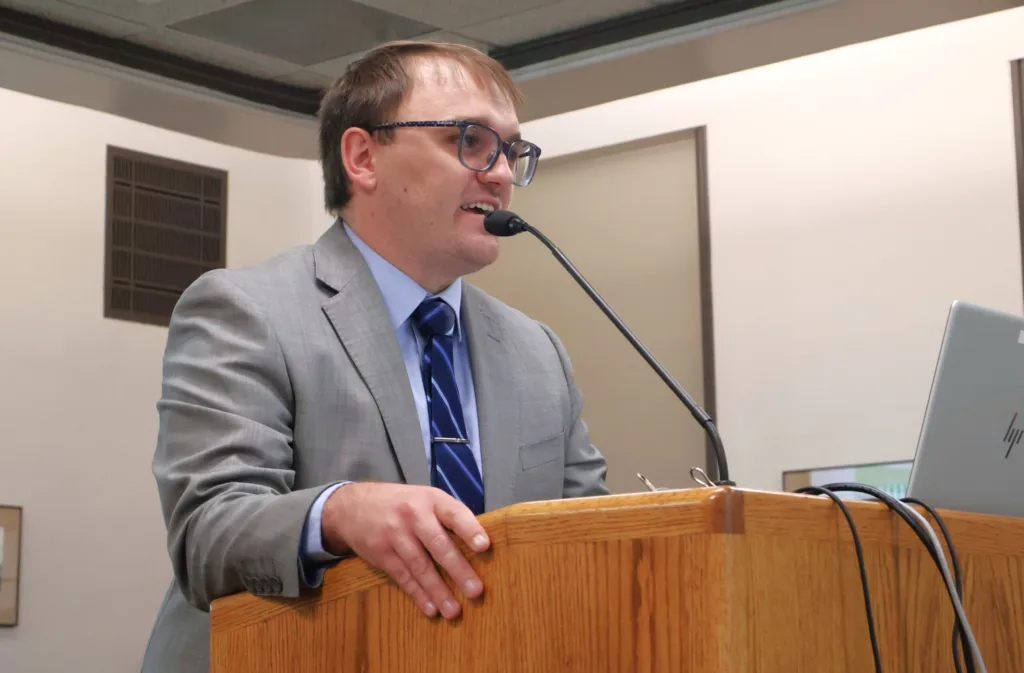

By: Michael Achterling (North Dakota Monitor)
A record number of people sought services from North Dakota domestic violence and sexual assault advocacy centers in 2024, a statewide coalition reported this week.
The statistics include more than 6,300 victims of domestic violence and nearly 1,400 victims of sexual assault, according to the North Dakota Domestic and Sexual Violence Coalition.
That represents a 3.3% increase in reports of domestic violence over 2023 and a 5.8% increase in reports of sexual assault. Seth O’Neill, executive director for the coalition, added he believes cases of domestic violence and sexual assault continue to be underreported. About one in four women and one in nine men will experience domestic violence in their lifetime, according to the Centers for Disease Control and Prevention.
“More people are being served, so that is a good thing,” said O’Neill, who oversees the coalition that includes 18 advocacy centers across the state.
The coalition received an increase in state funding in the legislative session that ended last month. The advocacy center will receive $11.7 million from the Department of Health and Human Services for the 2025-27 biennium, an increase of about $4.1 million over the previous biennium. The organization had requested $19.1 million from the Legislature.
O’Neill said some of that funding will go to increase wages for case advocates across the state. He added those frontline workers make about $21 per hour on average and some need to take additional jobs to make ends meet.
“No one is making a ton of money at this,” he said. “We’re hopeful this increase will allow people to be paid a living wage and take care of their families, but I still think we have a long way to go in that area.”
While O’Neill said the coalition is grateful for the state funding increase, he’s concerned about the potential of federal budget cuts. North Dakota’s advocacy service centers receive about 30% of their budgets from federal funds and the coalition receives about 95% of its money from federal sources, he said.
“We’re certainly reliant on federal funds,” O’Neill said. “We are in a holding pattern and we’re doing our best to apply for grants and different things, but we don’t know what the future will hold.”
Rep. Emily O’Brien, R-Grand Forks, said state lawmakers are monitoring the federal budget negotiations.
“We definitely are very cautious and thoughtful in the decision-making, and what we need to do to ensure these programs are still running because the needs are there,” said O’Brien, who served on the House Appropriations Committee. “It’s something that we have to do to make sure that those people are being served.”
In 2024, North Dakota advocacy centers secured 481 emergency orders for protection for domestic violence victims, an increase of 50 over the previous year.
O’Neill said increasing the number of protection orders for domestic violence victims is important because that means law enforcement can provide protection to the victims.
During the 2023 legislative session, O’Brien said the Legislature passed a series of laws, including House Bill 1268 and House Bill 1269, that made it easier to serve court papers for people with protective order hearings and mandated intervention programs for domestic abuse offenders.
“To see the work that we’ve done previously come to fruition is huge,” O’Brien said.
According to the 2024 data, 81% of North Dakota domestic violence victims were women, including 150 who were pregnant when they were assaulted. About 4,700 children were impacted by domestic violence last year.
About 38% of the total victims of sexual assault reported the incidents to law enforcement, according to the coalition.
O’Neill also said he believes the stigma around not reporting domestic and sexual violence is beginning to be chipped away.
“Our goal is to make North Dakota a place where people feel they can report these things and they will be taken seriously by law enforcement and the criminal justice system, as well as our program,” O’Neill said.
O’Brien said lawmakers focusing on providing services for victims, rehabilitation programs for offenders and preventative education for the public are long-term structures that can correct behaviors.
“We’ve started to see an improvement, but there is so much more work that needs to be done,” O’Brien said.